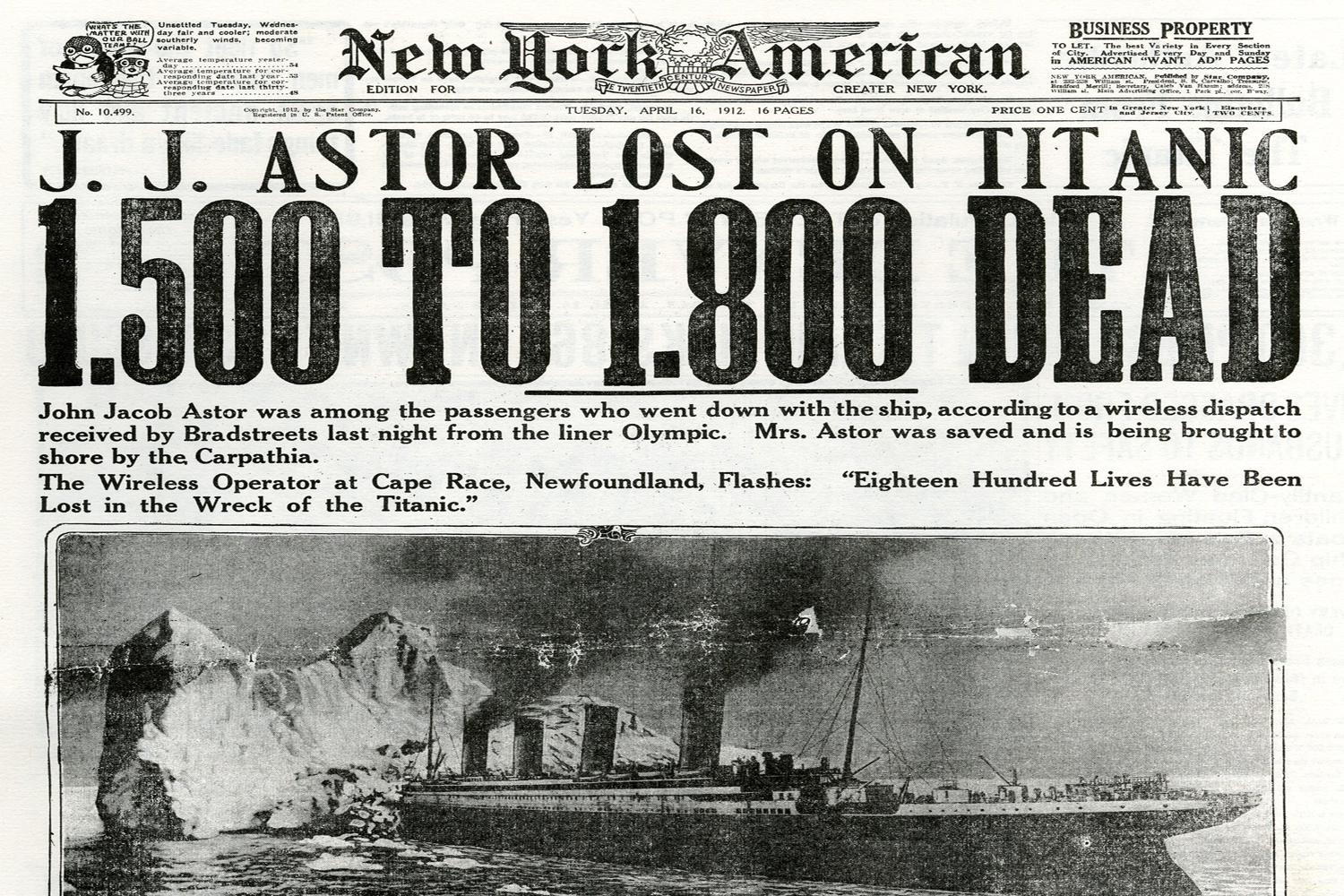Did you know...?
That many writers predicted the disaster of the Titanic cruise liner?
It's true. No less than 4 writers in some way predicted the accident long before it happened.
1) Morgan Robertson published a novella in 1898 entitled, Futility. It was the story of a grand cruise liner that sank. In it, the boat was the largest and fastest of its day, and--get this!--was called the Titan. In his story, the boat has almost identical dimensions to the Titanic, and both boats, though they have huge amounts of people aboard, only carry enough lifeboats for half. In his book, Robertson's boat is known as "unsinkable." These similarities have been called "eerie." I say they're downright creepy!
2) M. McDonnell Bodkin wrote This Ship's Run in 1908. The boat in his story is called Titanic and it follows almost the same route the actual ship would four years later, though in the story it doesn't collide with anything. The similarities are so close that many people believe Bodkin might have seen early plans for the ship. (Source)
3) Thornton Jenkins Hains (a.k.a. Man Clew Garnett) wrote The White Ghost of Disaster in 1912, just prior to the launching of the Titanic. In his story, the Admiral, an 800-foot ocean liner strikes an iceberg at 22+ knots in the North Atlantic. As there are not enough life boats, many passengers die as the boat sinks. The story gained popularity at newsstands even as the Titanic struck its fatal iceberg at exactly the same speed.
4) W.T. Stead wrote The Sinking of a Modern Liner in 1886. In it, an ocean liner travels from Liverpool to NYC and is involved in a collision. Again, the problem of too few lifeboats results in many deaths. Most strangely of all, Stead's book was prophetic of his own death. He died aboard the Titanic when it slipped beneath the Atlantic in April of 1912.
Crazy, right? Did these writers have some kind of psychic ability? Did contemporary horror of the times curse the ambitious liner? Personally, I'm not someone who believes in coincidence.
How would you explain these insane "coincidences?" Don't you think the true story of W.T. Stead would make awesome histfic?
That many writers predicted the disaster of the Titanic cruise liner?
It's true. No less than 4 writers in some way predicted the accident long before it happened.
 |
| Check out that crazy cover image! Source |
2) M. McDonnell Bodkin wrote This Ship's Run in 1908. The boat in his story is called Titanic and it follows almost the same route the actual ship would four years later, though in the story it doesn't collide with anything. The similarities are so close that many people believe Bodkin might have seen early plans for the ship. (Source)
3) Thornton Jenkins Hains (a.k.a. Man Clew Garnett) wrote The White Ghost of Disaster in 1912, just prior to the launching of the Titanic. In his story, the Admiral, an 800-foot ocean liner strikes an iceberg at 22+ knots in the North Atlantic. As there are not enough life boats, many passengers die as the boat sinks. The story gained popularity at newsstands even as the Titanic struck its fatal iceberg at exactly the same speed.
 |
| Source |
Crazy, right? Did these writers have some kind of psychic ability? Did contemporary horror of the times curse the ambitious liner? Personally, I'm not someone who believes in coincidence.
How would you explain these insane "coincidences?" Don't you think the true story of W.T. Stead would make awesome histfic?
Oh this is really interesting-- heck, this topic would make a great subject for a book. Luxury ship travel was at its peak during this time period, and sounds like there was a bit of a trend to write about it and potential disasters. A luxurious cruise liner, wealth, equalizing disaster-- stuff of great novels. Kind of reminds me of during the 70s when all the disaster movies were really popular, including a bunch about airplanes. But the similarities in names of ships and how they sank is, yeah, kinda weird.
ReplyDelete